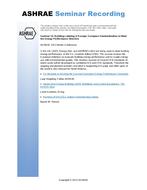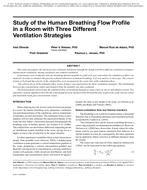The building energy regulation in Singapore is based on an overall thermal transfer value (OTTV) for the building façade. For the use of the motorized automated blind system in building designs, it is important to be able to predict the contribution of such a system toward the OTTV of the building. Various weather parameters, including the solar radiation and daylight illuminances, dry- and wet-bulb temperatures, wind parameters, etc., have been recorded at the National University of Singapore through its participation in the International Daylight Measurement Programme of Commission Internationale l’Eclaige (CIE) since 1988. From the measured data, three typical sky conditions and their number of occurrences in a typical year were ascertained. The outdoor solar radiation and luminance conditions were simulated in the laboratory, and the motorized blinds were tested to estimate their energy-saving potential, from which an annual shading coefficientwas calculated. This shading coefficient is easily used to find the effect of the automated blind system on the overall thermal transfer coefficient (OTTV) of the building façade.
Units: Dual
Citation: Symposium, ASHRAE Transactions, vol. 106, pt. 2
Product Details
- Published:
- 2000
- Number of Pages:
- 11
- File Size:
- 1 file , 7.3 MB
- Product Code(s):
- D-7240


